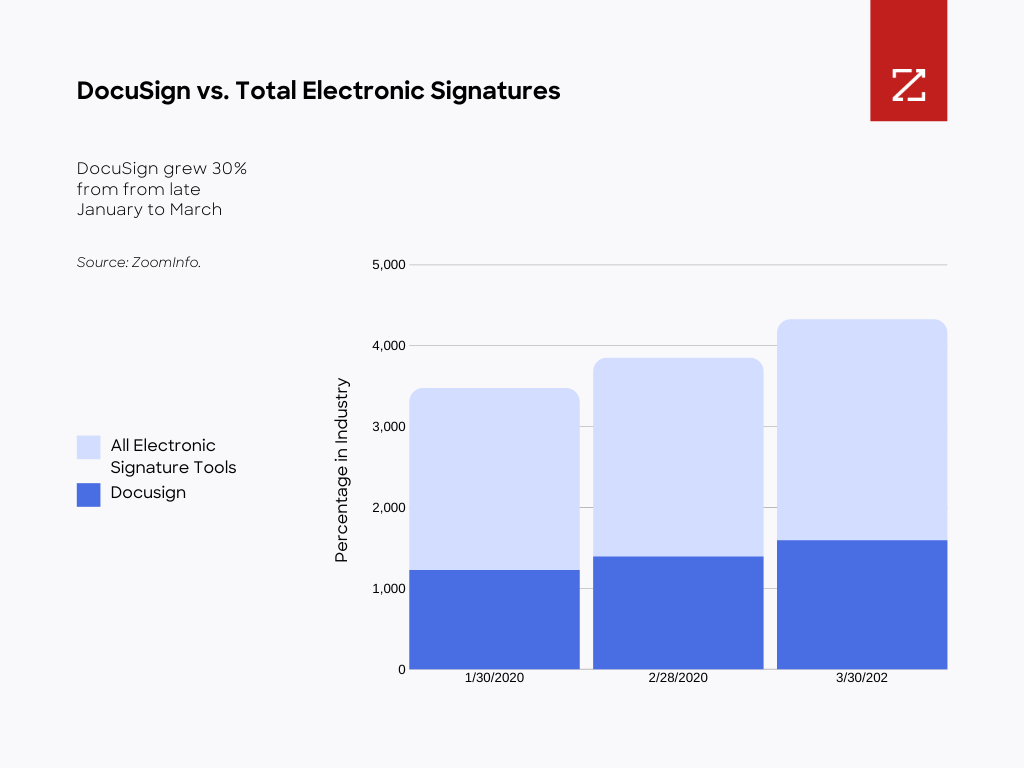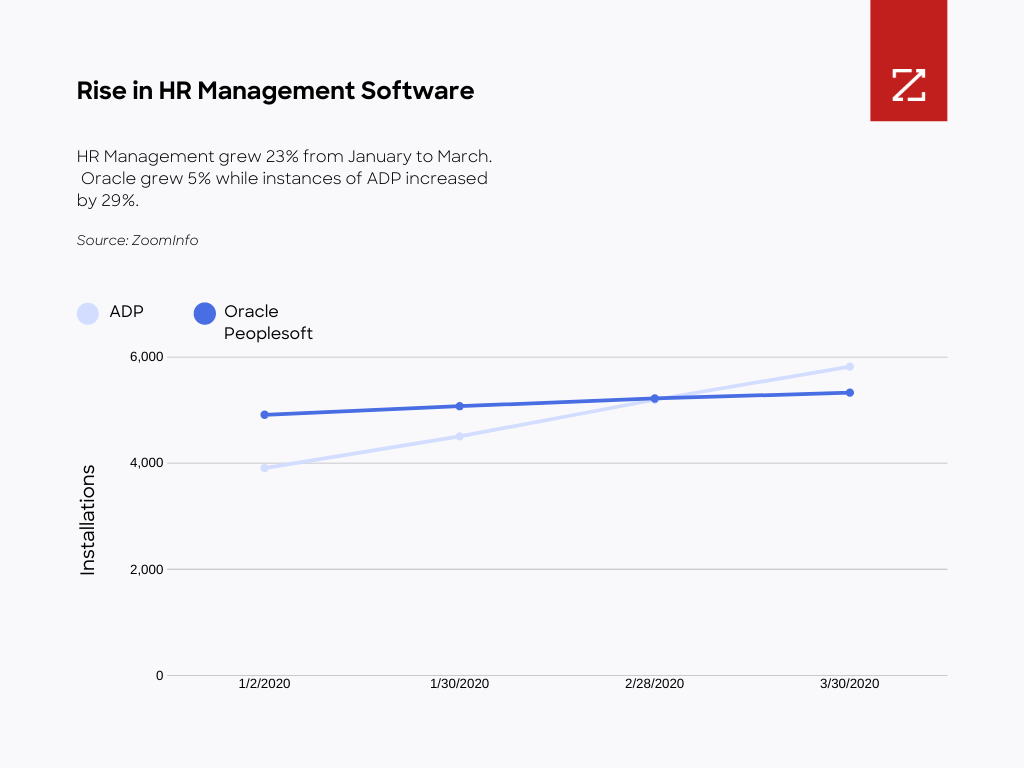Around the globe, businesses have been forced to make major structural changes due to social distancing and shelter-in-place measures.
In response, companies have adopted technologies that remove in-person interactions and encourage a more distributed workforce. Some companies have created whole new lines of business to survive. Companies that haven’t will likely shutter their doors for good.
Sure, the number of new cases will decline, healthcare will be better equipped to deal with the infected, and a vaccine or treatment will eventually be found. How businesses operate, though, may fundamentally change forever.
Over the last few weeks, we have tracked ZoomInfo’s database of over 14 million companies and +30,000 technologies to see what digital tools companies are adopting.
Digital Tools Growing During Coronavirus (and Post-Pandemic Predictions)
1. Document Signing
The in-person signature is a critical part of billing and contracts for many businesses. Whether it’s a real estate deal, consulting services, or simply signing for a package, we’re often required to put ye old pen to paper to seal the deal. Given social distancing measures, many businesses that were reluctant to adopt electronic signature technologies are ditching the John Hancock and handshake for a few clicks and an email send.
Since January 30, we have seen a 21% increase in the adoption of electronic signatures tools. DocuSign is particularly popular, increasing 30% over the same period. Many industries, such as real estate and banking, are faced with critical bottlenecks that required in-person signatures.

It’s now hard to imagine a world where the simple distribution, review, signing, and archiving of documents is adopted and then abandoned in favor of a return to paper.
2. HR & Payroll Software
HR and payroll software was the third-largest increase in technologies surveyed. We have seen a growth of 17% for HR and payroll software since January 30.

With employees asked to abstain from coming into the office, it’s no surprise to see a rapid uptick in HR and payroll software. Payroll software, however, is nowhere near as simple to adopt as document signing. Employers need to connect their company bank accounts, build-out digital org charts and have employees start getting direct deposit.
When people do return to work, companies will have gone too far to return to handing or mailing checks to employees.
3. Web Conferencing
By far the largest and most substantial change for businesses has been the adoption of web conferencing and video communication software. Web conferencing as a whole grew over 68% from January 30 to March 30. Zoom Video Communications has seen astounding growth, increasing over 300%, according to our samples of businesses.
For businesses, two major things are likely to happen as a result of the adoption of web conferencing and video communication technology: a reduction in business travel and in-person events going virtual.
Related: What Explains Zoom Video’s Success During the Coronavirus?
Other Coronavirus Trends & Predictions
Mass Reduction in Business Travel
The average cost of a business trip is $1,293. Imagine a company with a 100-person sales team where each salesperson takes one business trip per quarter, for a total of 400 trips. That sales team is costing over $500,000 in travel expenses alone.
Over the next few months, many sales teams will be rightfully barred from traveling but will continue to hit their number from home. Executives of multinational companies will host important meetings virtually and businesses will carry on without spending thousands of dollars on in-person meetings.
When travel restrictions are lifted, many accounting departments will be left to wonder if the benefits of travel outweigh the costs. –
Events Go Virtual
From small-town gallery openings to massive events like SXSW, event organizers are having their whole world turned upside down. Transitioning events from in-person to virtual has been in motion long before anyone had ever heard of COVID-19. But, let’s be honest, innovation for digital events has been limited. The webinar format of today does not look much different from the webinar from ten years ago.
Over the next few months, content creators around the world will test new formats for virtual events both large and small. Consider Coachella or Sundance or sporting events moving online. These events will need to innovate the experience to stay relevant.
At the same time, content creators will ramp up the production of higher quality education tools for mass audiences (picture your grandmother receiving intuitive resources for setting up a Zoom call).
A more digitally educated audience will make future virtual events run smoother, and the explosion of ideas will break virtual events out of the stagnant world they live in today.
The New Business as Usual
Over the next few months, one guarantee is a sense of uncertainty. Businesses will have no better insight into when this will end than anyone else. It seems less likely that we will have a quick return to normal and more likely need to practice social distancing on and off for the next few years (Harvard Study).
In the face of increased uncertainty, companies large and small will need to adapt; they will need to become more nimble, scrappy and efficient as the adoption of digital collaboration and communication tools grows.
Related Coronavirus Posts:

